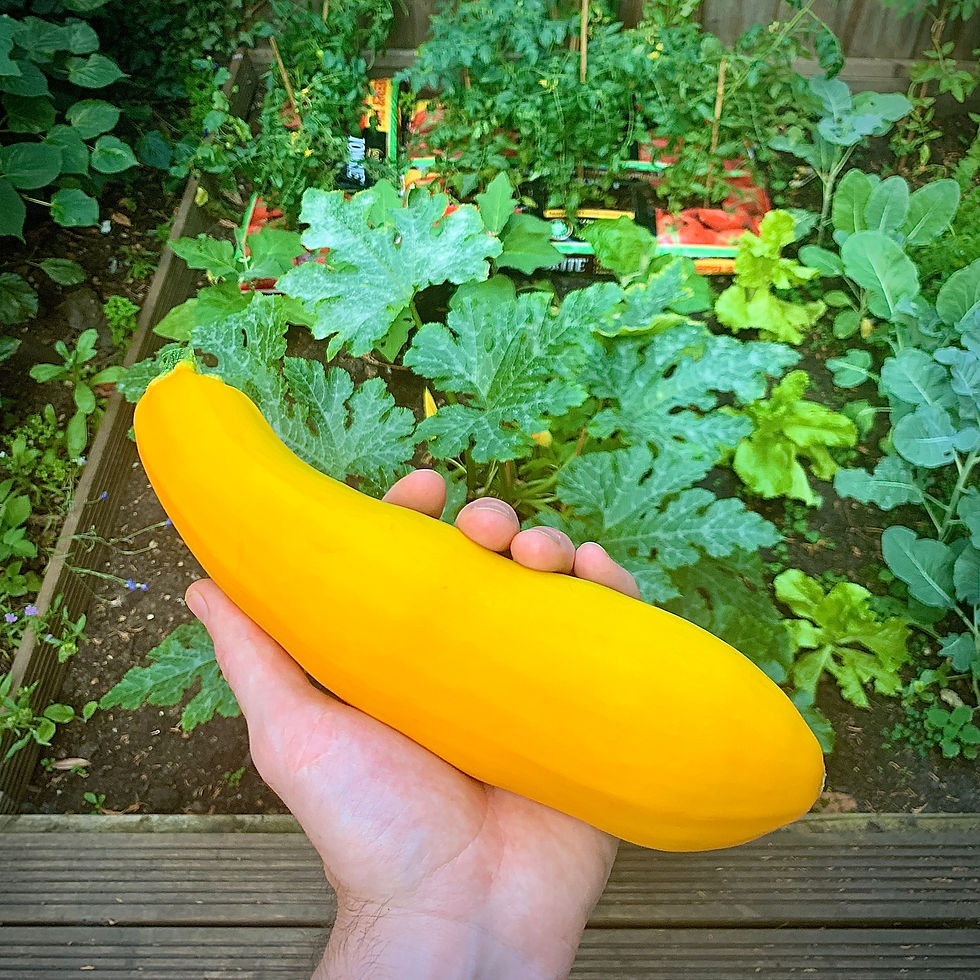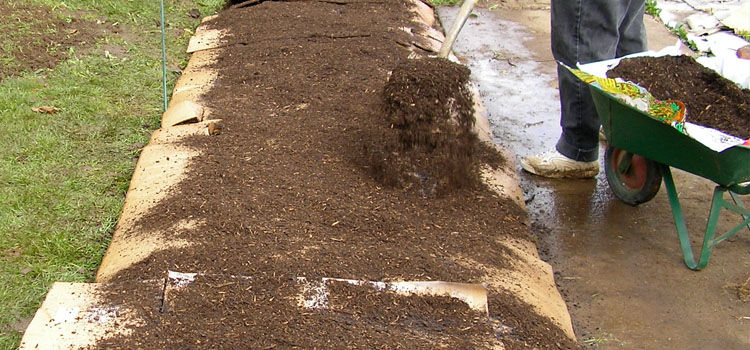The 10 best veg plants to grow in your first season with an AllotMe Plot
- AllotMe

- Dec 11, 2022
- 6 min read

Growing your own fruits, vegetables and herbs is a rewarding experience that can provide you with fresh, healthy produce while also saving you money at the grocery store. Whether you have a large garden or a small balcony, there are many plants that can thrive in a UK climate. Here are the top 10 plants to consider when starting your first vegetable garden:
#1 Tomatoes
Tomatoes are a versatile and delicious fruit that can be used in a variety of dishes, from salads and sandwiches to soups and sauces. To grow tomatoes in the UK, it is best to sow the seeds indoors in pots or trays in March or April. Once the seedlings are large enough, they can be transplanted outdoors in May or June. When caring for tomato plants, make sure to water them regularly and provide them with plenty of sunlight. They also benefit from being staked or supported to prevent the fruits from weighing down the plants. Tomatoes can be harvested from July to October, depending on the variety.

#2 Lettuce
Lettuce is a cool-season plant that is easy to grow and provides a fresh, crunchy addition to salads and sandwiches. Sow the seeds in April or May, either directly in the ground or in pots, and thin the seedlings to about 10 cm apart. Keep the soil moist, and avoid planting lettuce in the hottest part of the day. You can start harvesting lettuce leaves as soon as they are large enough to use, and continue to do so until the plant starts to bolt (flower and produce seed) in the summer heat.

#3 Radishes
Radishes are another cool-season plant that is easy to grow and ready to harvest in just a few weeks. Sow the seeds in April or May, either directly in the ground or in pots, and thin the seedlings to about 5 cm apart. Keep the soil moist and weed-free, and avoid planting radishes in the hottest part of the day. You can start harvesting the small, round radishes when they are about the size of a golf ball, and continue to do so until the plants start to bolt in the summer heat.

#4 Carrots
Carrots are a tasty and versatile root vegetable that can be grown in a variety of soil types. Sow the seeds in April or May, either directly in the ground or in pots, and thin the seedlings to about 5 cm apart. Keep the soil moist and weed-free, and avoid planting carrots in the hottest part of the day. You can start harvesting the small, tender carrots when they are about the size of a pencil, and continue to do so until the plants start to bolt in the summer heat.

#5 Peas
Peas are a cool-season vegetable that is easy to grow and provides a delicious and nutritious addition to salads, soups and stews. Sow the seeds in April or May, either directly in the ground or in pots, and thin the seedlings to about 5 cm apart. Keep the soil moist and weed-free, and provide the plants with a support structure, such as a trellis or fence, to climb on. You can start harvesting the peas when the pods are full and plump, and continue to do so until the plants start to wilt in the summer heat.

#6 Spinach
Spinach is a cool-season vegetable that is easy to grow and provides a tasty and nutritious addition to salads, soups and sandwiches. Sow the seeds in April or May, either directly in the ground or in pots, and thin the seedlings to about 10 cm apart. Keep the soil moist and weed-free, and avoid planting spinach in the hottest part of the day. You can start harvesting the young, tender leaves as soon as they are large enough to use, and continue to do so until the plants start to bolt in the summer heat.

#7 Potatoes
Potatoes are a staple food in many parts of the world, and they can be used in a variety of dishes, from mashed potatoes and roast potatoes to chips and potato salad. To grow potatoes in the UK, it is best to plant the "seed potatoes" (small potatoes with eyes) in the ground in March or April. Potatoes prefer well-drained, fertile soil and should be watered regularly. As the plants grow, make sure to "earth up" the soil around the base of the plants to prevent the potatoes from turning green (a sign of toxicity). Potatoes can be harvested from July to October, depending on the variety.

#8 Cabbage
Cabbage is a nutritious and flavorful leafy green that can be eaten raw or cooked in a variety of dishes. To grow cabbage in the UK, it is best to sow the seeds indoors in pots or trays in February or March. Once the seedlings are large enough, they can be transplanted outdoors in April or May. Cabbage prefers well-drained, fertile soil and should be watered regularly. As the heads develop, make sure to protect them from pests and diseases, such as cabbage worms and clubroot. Cabbage can be harvested from July to October, depending on the variety.

#9 Beetroot
Beetroot is a sweet and earthy root vegetable that can be eaten fresh or cooked in a variety of dishes. To grow beetroot in the UK, it is best to sow the seeds directly in the ground in April or May. Beetroot prefers well-drained, fertile soil and should be watered regularly. Thin out the seedlings as they grow to give the beetroot enough space to develop properly. Beetroot can be harvested from July to October, depending on the variety.

#10 Onions
Onions are a staple ingredient in many dishes, and they can be used fresh or cooked in a variety of ways. To grow onions in the UK, it is best to sow the seeds indoors in pots or trays in February or March. Once the seedlings are large enough, they can be transplanted outdoors in April or May. Onions prefer well-drained, fertile soil and should be watered regularly. As the bulbs develop, make sure to hill up the soil around the base of the plants to keep them covered. Onions can be harvested from July to September, depending on the variety.

Bonus: Courgettes
To grow courgettes (also known as zucchini) in a UK vegetable garden, it is best to sow the seeds directly in the ground in May or June. Courgettes prefer well-drained, fertile soil and should be watered regularly. As the plants grow, make sure to provide them with support, such as stakes or trellis, to help them grow upwards.
When caring for courgette plants, it is important to regularly check for pests and diseases, such as powdery mildew and aphids. Removing any infected leaves or plants can help prevent the spread of these problems. It is also important to regularly harvest the courgettes to encourage the plants to continue producing fruit. Courgettes can be harvested when they are small and tender, or when they are larger and more mature.
Courgettes can be harvested from July to September, depending on the variety. When harvesting courgettes, it is important to use a sharp knife or garden scissors to cut the fruits from the plants, leaving a small stem attached. This will help prevent damage to the plants and encourage them to continue producing fruit. Courgettes can be stored in the refrigerator for up to a week, or they can be frozen for later use.

And don't forget about Herbs...
A variety of herbs can be easily grown in a UK vegetable garden, including basil, parsley, rosemary, thyme, and sage. To grow herbs in the UK, it is best to sow the seeds indoors in pots or trays in March or April. Once the seedlings are large enough, they can be transplanted outdoors in May or June. Herbs prefer well-drained, fertile soil and should be watered regularly. As the plants grow, make sure to trim and prune them regularly to encourage new growth and prevent them from becoming overgrown. Herbs can be harvested throughout the growing season, depending on the variety.

Overall, starting a vegetable garden can be a fun and rewarding experience, and by choosing the right plants, you can enjoy fresh and delicious produce all season long. By following the sowing, care, and harvesting instructions for each plant, you can successfully grow a variety of fruits, vegetables, and herbs in your Plot.



Comments